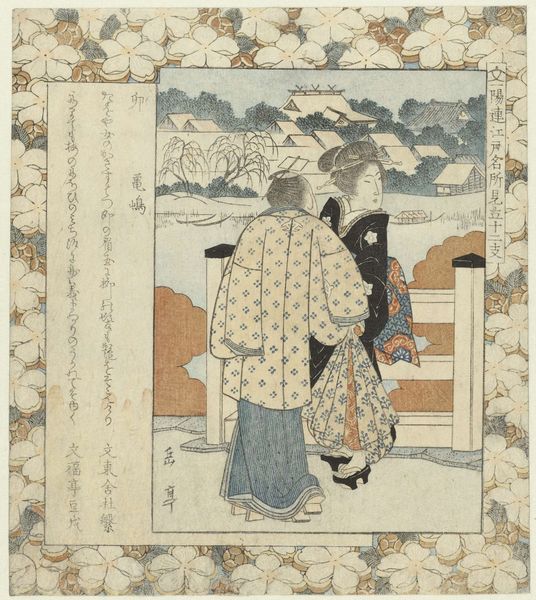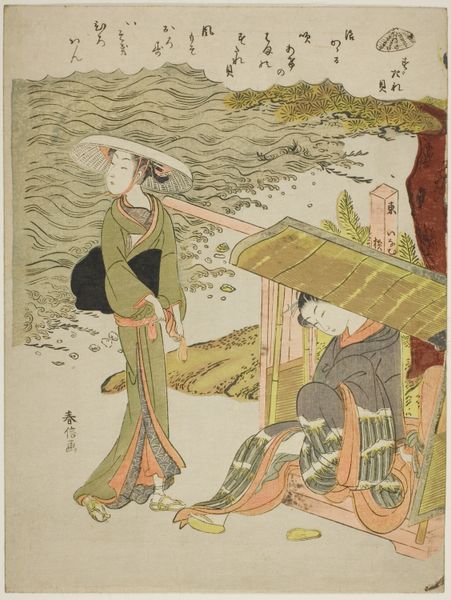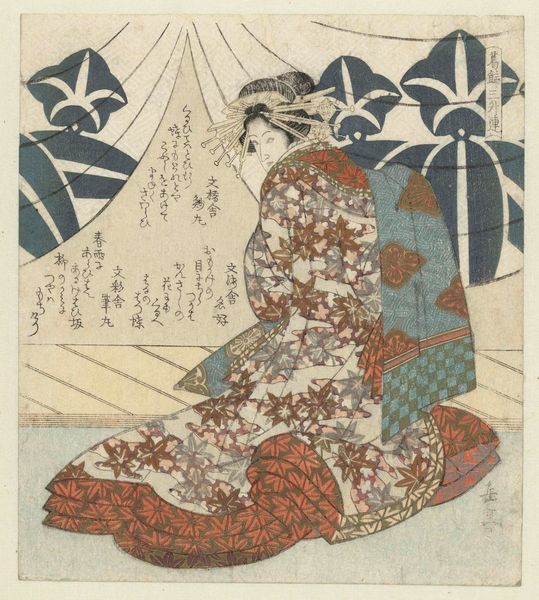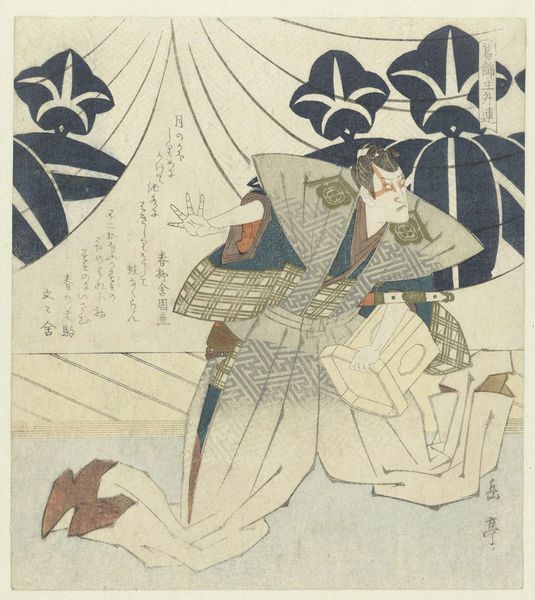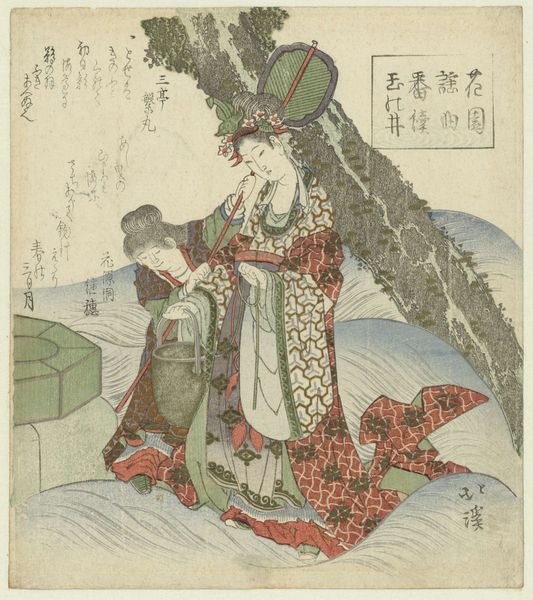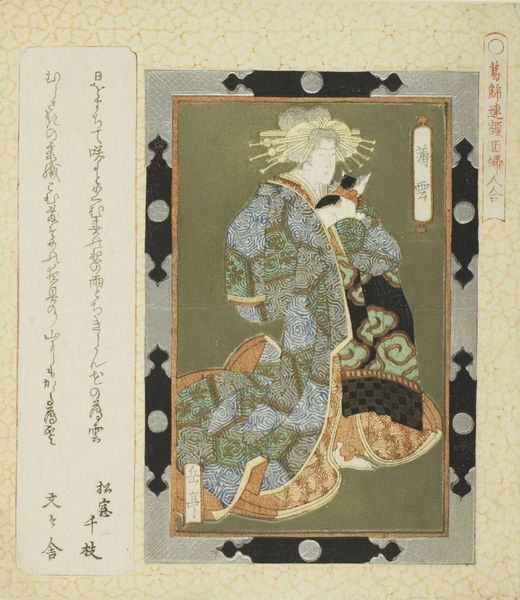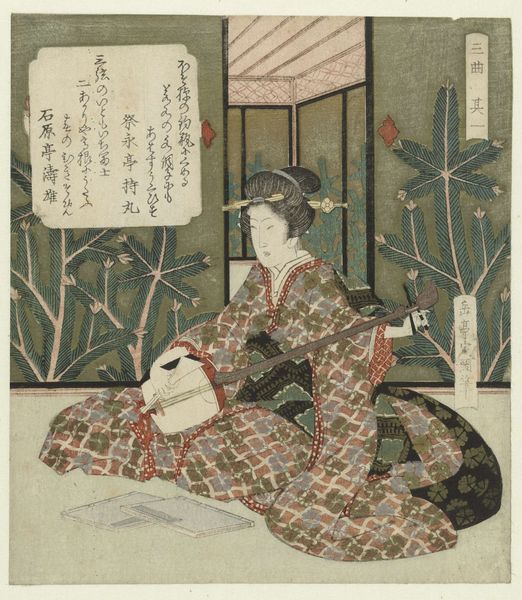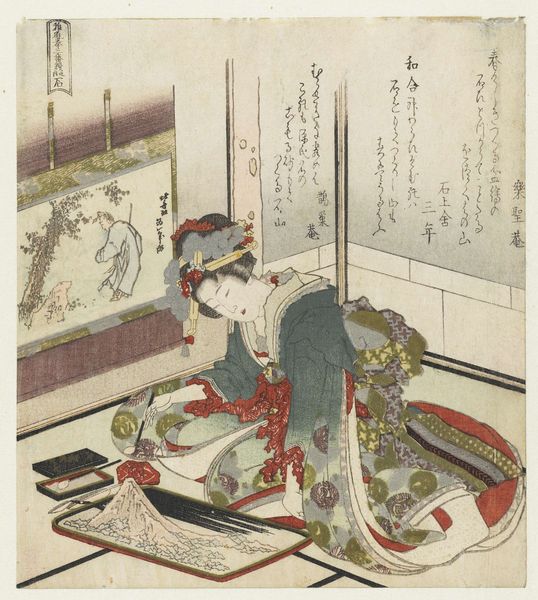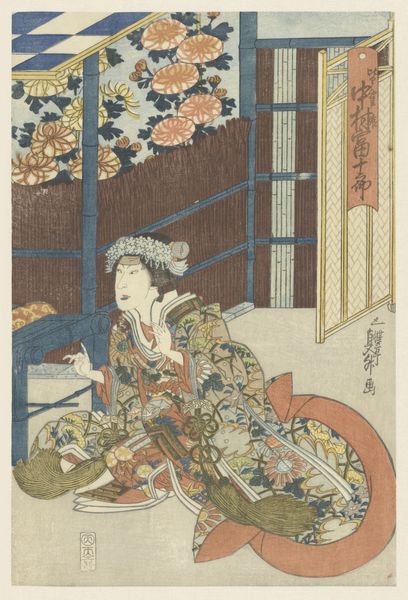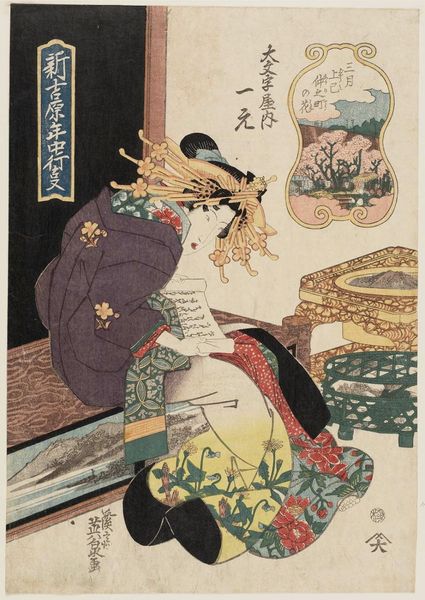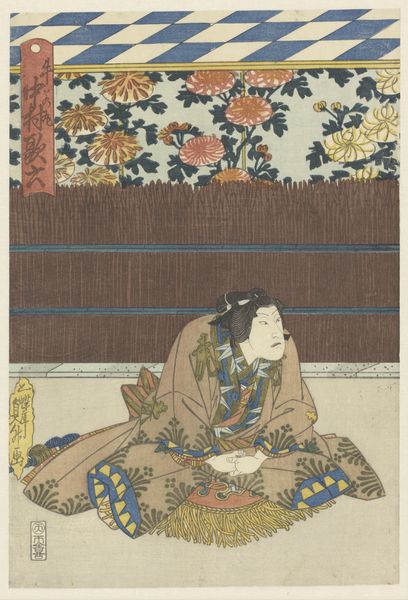
print, watercolor
#
water colours
#
narrative-art
# print
#
asian-art
#
landscape
#
ukiyo-e
#
figuration
#
watercolor
#
mixed media
#
watercolor
Dimensions: height 211 mm, width 186 mm
Copyright: Rijks Museum: Open Domain
Curator: Let's turn our attention to a print, "Paard: Ōji", made around 1827 by Yashima Gakutei. It's currently housed right here in the Rijksmuseum. Editor: Ah, the cool palette strikes me first. The subtle greys and muted blues create such a tranquil scene, even with the stylized floral border trying to compete for my attention. What can you tell me about its materiality? Curator: It is, as the classification suggests, a print made with watercolor and mixed media, part of the ukiyo-e tradition. We see here not just an image but an engagement with narrative. Notice how the landscape elements—the waterfall, the temple in the distance—are integrated with the figure in the foreground. It speaks to the blending of high art traditions with what would have been popular consumer culture. Editor: She is holding what looks like a tray or perhaps a lid from some container. The geometry of the lid is striking. How do you feel that the artist chose to render the garments as a very defined plaid textile pattern. I like this focus of his attention when there is not that much attention paid to much else of this piece in terms of defined detail. Curator: That interplay between geometric patterns and organic forms is definitely something Gakutei employs quite thoughtfully here. We must also consider the context: Prints like this were a commodity, produced for a market interested in scenes of everyday life, beautiful women, and famous locations. The printmaking process itself, with its reliance on skilled artisans and the reproduction of images, speaks to the social and economic conditions of the time. Editor: Yes, in deed, and it brings the subject to mind when we are focusing in on that. Her expression looks serene, almost melancholic. What is she doing? The artist gives her almost the pose of a woman who would otherwise be working, not resting. It raises the question of labour; where her place is. How does her labor intersect with her beauty? Curator: Well, I think you’ve just pinpointed the essence of its allure, even across centuries. This print provides a glimpse into a very specific historical and material moment and can tell a deeper narrative. Editor: A silent poem, meticulously crafted and printed. I’ll never look at watercolor the same way again.
Comments
No comments
Be the first to comment and join the conversation on the ultimate creative platform.
